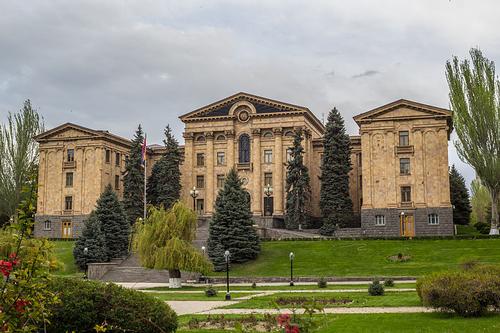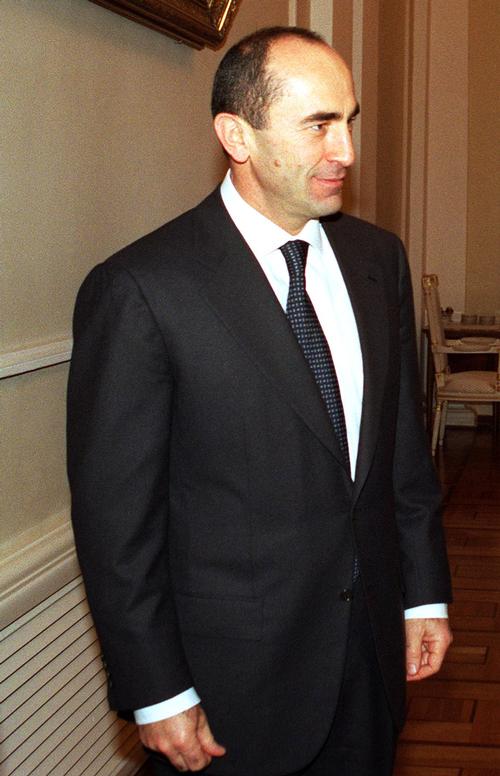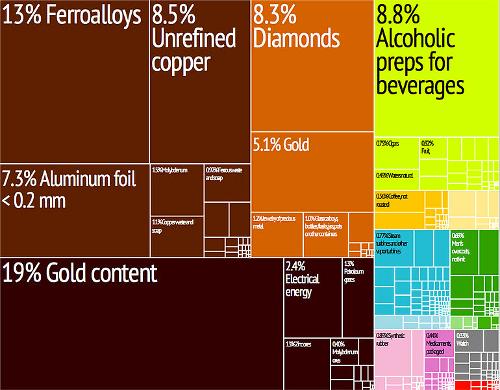ARMENIA
Society

Society

Cities in ARMENIA
| Yerevan |
Society
State structure
 Armenia Parliament BuildingPhoto: Serouj Ourishian CC 3.0 Unported no changes made
Armenia Parliament BuildingPhoto: Serouj Ourishian CC 3.0 Unported no changes made
In a national referendum in 1995, a new Constitution was approved to replace the 1978 Constitution, which dates back to the Soviet era. In 2003, a referendum was held on various constitutional changes to reduce the power of the president. However, this referendum was invalidated by a low turnout. There are now new proposals to improve the separation of powers.
The president occupies a central position in the Armenian polity. He is directly elected for a five-year term. Executive power rests with the government of the republic;this is composed of the prime minister and other ministers. The Prime Minister is appointed by the President. The president then appoints the other ministers on the advice of the Prime Minister. In addition, the president appoints the regional governors. As a result, the system is still highly centralized.
Legislative power rests with parliament. According to the constitution, this consists of 131 commissioners, elected for 4 years. The pro-presidential Republican Party is the largest party, forming a coalition with the Armenian Revolutionary Federation (ARF) and Land of Justice.
The president heads the Supreme Council. The Minister of Justice and the Attorney General are deputy heads of this council. There is a separate court for military personnel.
Formally, the separation of powers has been implemented in Armenia. In practice, the implementation of this separation is a cause for concern. The judiciary in particular is under pressure from the executive and legislative powers.
Politics
 Robert Kocharyan ArmeniaPhoto: Public domain
Robert Kocharyan ArmeniaPhoto: Public domain
In 1998, Kocharian was elected president of Armenia. The election result was controversial. International observers found electoral fraud. Both the parliamentary and presidential elections of 2003 were controversial. Following this and the 2003 referendum, the opposition began a months-long boycott of the parliament, which has been maintained to date.
In April 2004, major opposition demonstrations took place. However, the opposition remains weak and divided. The demonstrations have, however, weakened the president's position. In addition, new proposals for constitutional changes are now underway, which can reduce tension between president and opposition.
The most important part of domestic politics is the situation around Nagorny-Karabakh. Despite several peace negotiations, a definitive solution does not seem in sight for the time being. Other priorities are the fight against corruption and the informal economy and the improvement of both political and economic stability.
There is little line to be found in the domestic political developments in Armenia. The political arena in the country is still often dominated by specific interests and less by content of policy and democratic control.
Economy
 Export ArmeniaPhoto: R Haussmann, Cesar Hidalgo, et. al. CC 3.0 Unported no changes made
Export ArmeniaPhoto: R Haussmann, Cesar Hidalgo, et. al. CC 3.0 Unported no changes made
The break-up of the Soviet Union, the Nagorny-Karabakh conflict and the fallout from the 1988 earthquake have left the country in a general economic slump, which it was difficult to get out of.
The latter years, however, the economy has grown rapidly. Higher wages have pushed up domestic demand, which is one of the causes of GDP growth. Thanks to strict monetary policy, inflation is low. There is, however, a continuous appreciation of the dram, which makes Armenian exports more expensive. The population has little faith in the currency, as evidenced by the fact that many bank accounts are held in dollars.
Although tax collection has greatly improved in recent years, this remains a relatively low percentage of GDP. There is a constant budget deficit. This is mainly caused by social spending in the context of the poverty reduction strategy.
Furthermore, there is a persistent current account deficit. This is funded by loans and foreign direct investment (FDI). FDI has risen sharply in recent years. It is worth mentioning the rapid decline in the debt/GDP ratio.
A large part of the companies have been privatized. The process is more difficult for the other companies. Investors are often put off by the Karabakh conflict. Due to the economic blockade of Turkey and Azerbaijan, exporting is difficult, but Armenia has developed new export routes through Georgia and Iran. According to the IMF, Armenia's opportunities for economic development now lie in activities that could leverage the country's relatively large human capital.
The Armenian diaspora is an important source of income. The diaspora makes it easy for many Armenians to find their way abroad. For example, there are approximately 2 million Armenians in the Russian Federation, 1 million in the United States and half a million in France. There is a major 'brain drain'
Sources
Elmar Landeninformatie
CIA - World Factbook
BBC - Country Profiles
Last updated June 2025Copyright: Team The World of Info